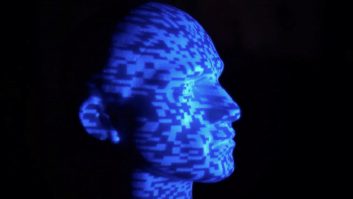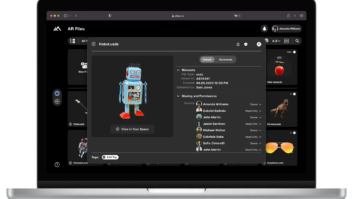
Conversion Opinion – Kai Van Beers, senior colourist and part of the London stereo 3D implementation team at Prime Focus, comments on the benefits and technical challenges of 2D to 3D conversion.
Interest in 3D is now at an all time high. With Sky set to launch the UK’s first 3D channel this year and ESPN broadcasting at least 85 live sports events in 3D on its new channel ESPN 3D in 2010, 3D will eventually become a permanent fixture in many consumers’ homes. If this proves successful, other broadcasters will no doubt invest in 3D channels as well.
One major headache for broadcasters is the lack of 3D content currently available. Unless a great deal of investment happens in creating 3D programming, it’s likely there won’t be enough content to satisfy demand.
The answer is 2D to 3D conversion. While it’s been in the pipeline for a while, recent innovations mean that the quality is now better and the conversion is far less time consuming. At Prime Focus we’ve developed our own proprietary software, View-D, which we’re currently implementing in the UK following extensive tests in the US on films and short and longform broadcast work.
2D to 3D conversion will open doors for existing content to be viewed in a totally different way, but there are a number of issues to bear in mind when converting content. Current archived footage wouldn’t have been shot with 3D in mind, and when completing 2D to 3D conversion, some shots just won’t translate well into 3D.
Used frequently in 2D films, wide shots that zoom to close shots, shots where people cut straight in front of the camera or fast-cut shots won’t work as well in 3D because the movement between different depth fields are so quick — it wouldn’t sit well on the audience’s eyes in 3D.
But there are a number of ways in which you can make these shots look better when they’re converted into 3D. Re-framing wide shots can often help and works well, and with fast cuts it’s possible to limit the depth and then slowly bring it back to make sure it’s not noticeable in the slower cuts.
What’s also helpful is to sit with the director and re-cut the scene, although this isn’t always possible. It’s important to look at the scene and decide what you think will harm the content the least before deciding on using one or a combination of the two techniques.
Converting 2D to 3D can involve a lot of manual work with a stereographer, depending on the content that has already been created. Producers now need to look at shooting a 2D commercial or TV programme with 3D in mind, so if it’s converted later on, it will limit the amount of work and minimise some of these challenges.
When dealing with converted content there are different methods to take into account depending on your role. For example as a colourist when you’re grading in 2D, you’re creating a feel of depth for the viewer by adding high and low lights, but this isn’t necessary when you’re grading a 3D image as the depth is already there.
When converting existing 2D content that has already been graded, you often have to back off heavy vignettes to level out this contrast, as the viewer is looking ‘into’ rather than ‘at’ the picture. And when grading in 3D, people in the shots are important. You need to look more at the overall look and contrast of their skin tone and then flatten the image.
On the downside, converting existing content does mean that you lose the creative control of grading in 3D from scratch, but it’s possible to neutralise the initial grade and make sure it’s levelled out more evenly so it works better in 3D.
2D to 3D conversion looks like it’s here to stay, so producers have to make sure they’re working with a post team that understands both the software they’re using and the challenges involved in converting content.






